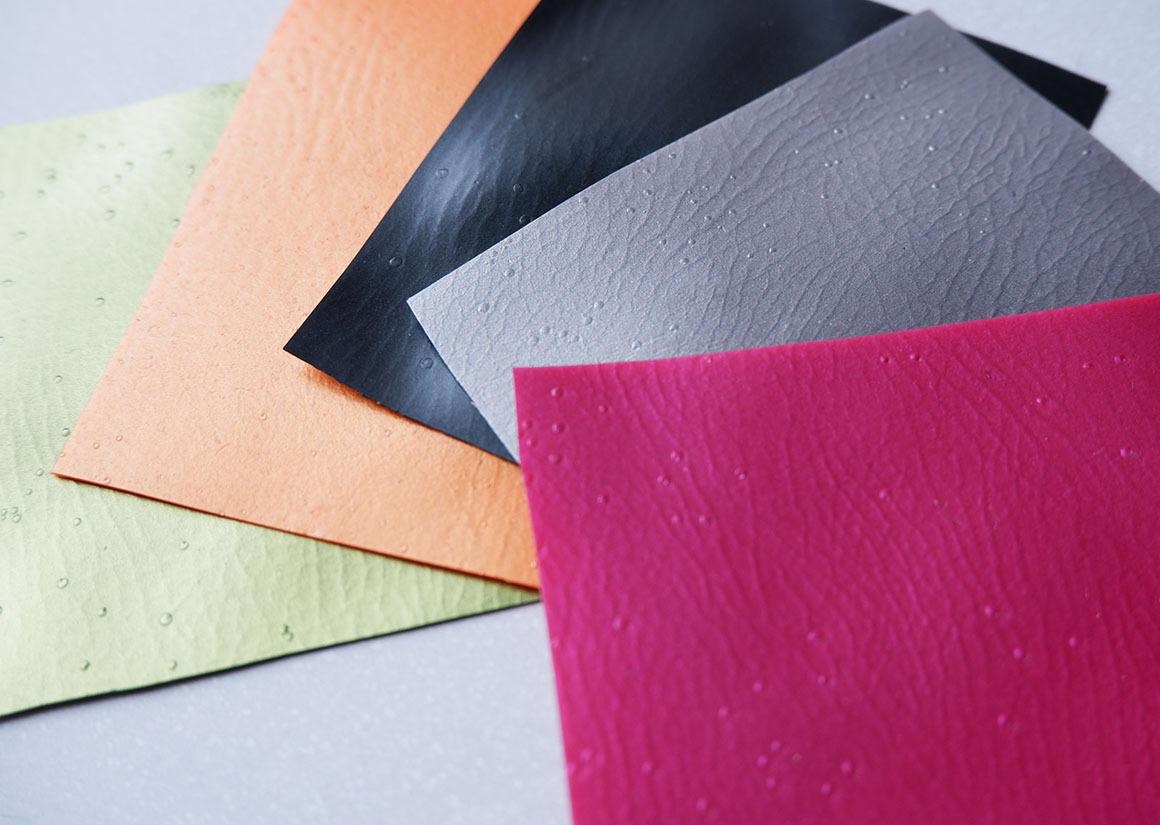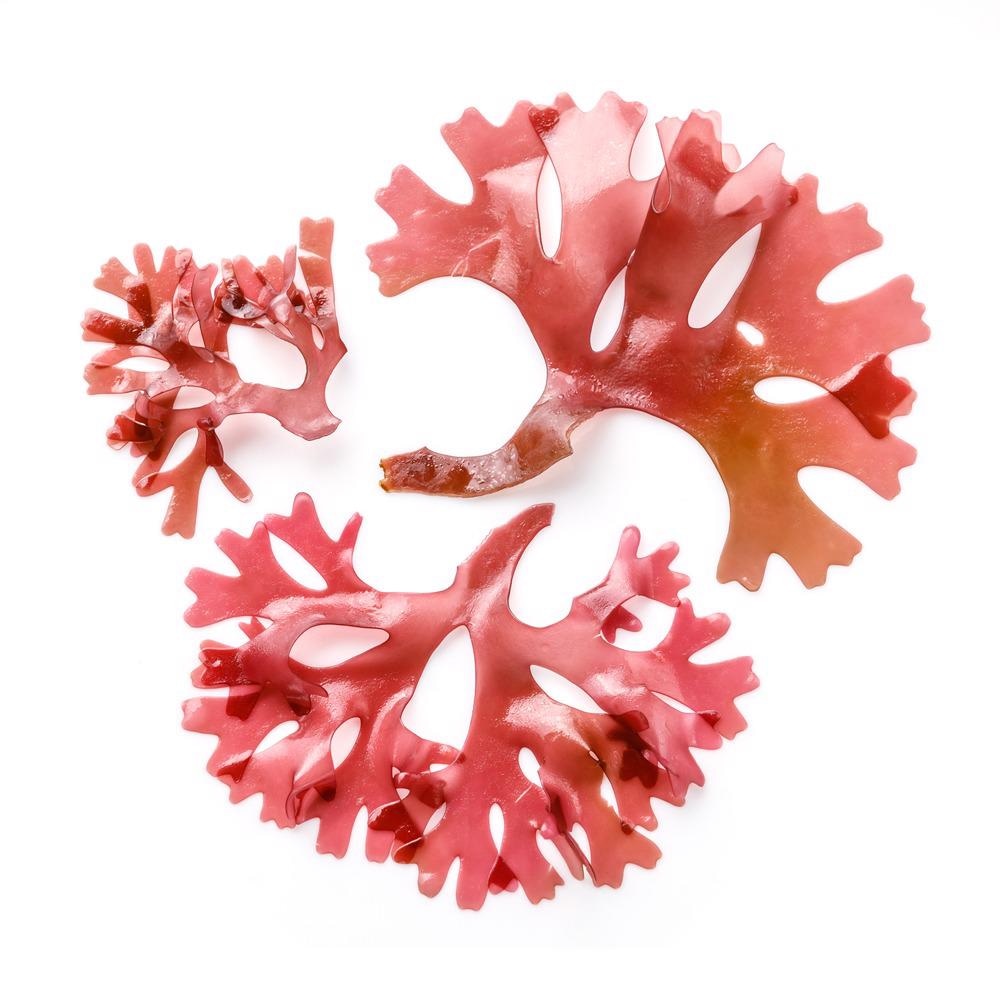AZoM speaks with Anna Watkins about her business Uncommon Alchemy, which is developing an exciting novel textile material made from seaweed.
Please can you introduce yourself and your research/professional background?
I’m a material innovator working on sustainable materials for the fashion industry. My company, Uncommon Alchemy, is currently developing a 100% biobased alternative to leather, made using seaweed as the main raw material.
What inspired you to begin researching and developing new materials?
I come from a creative background in fashion/textiles, and during my undergraduate degree I realized that what really interested me about textiles was the materiality of it rather than the garment design itself. I became really frustrated with the lack of sustainable materials available and felt that in a lot of cases, choosing a so-called “sustainable” option resulted in too much compromise.
I started researching biomaterials, found some open-source recipes online, and began experimenting. I fell in love with the process and started developing my own materials. I’ve been developing seaweed leather ever since.
The fashion and textile industry has become notoriously unsustainable. What are some of the key issues that we need to tackle in this sector?
As with all sustainability issues, there’s not one simple answer. In my practice, I focus on using natural raw materials, green chemistry, and adopting circular principles. Raw materials and biodegradability are one part of the problem, but from a wider perspective, what we really need is system change throughout the fashion industry. We need better raw materials and better ways of capturing and reprocessing waste – innovation needs to happen across the value chain. We also need to find better ways of communicating with consumers about sustainable options.
We need to communicate that sustainability is not about making one perfect choice, but rather that it is a set of decisions that are complex and subjective – and then, of course, we need to equip consumers to make those decisions based on the facts. The bright side is that there is loads of really exciting work going on across all aspects of the fashion industry, and a lot of push from consumers and industry to fix these problems.

Image Credit: Uncommon Alchemy
You have developed a novel material that uses seaweed to produce a high-quality textile. What are the properties of the material?
Seaweed leather is being designed to perform to the same standards you’d expect from any other fashion leather alternative – so for end consumers, that means being aesthetically attractive and standing up to the rigors of day-to-day use. For brands, that means acting as a direct substitute in their current manufacturing processes.
One of the great things about this material is that it is highly customizable in terms of color and texture, so the design possibilities are endless. And unlike most other leather alternatives, it will also be fully biodegradable when it reaches its end of life.
What are the environmental benefits of your novel textile?
The benefits start with the raw material itself – seaweed. Seaweed plays a vital role in ecosystems and actually has bioremediation effects: it captures carbon and it can also absorb nitrogen and phosphorous from eutrophied waters. Seaweed can help to mitigate wave energy, which can aid in preventing coastal erosion, and it can also provide sheltered habitats for marine wildlife. Cultivated and harvested properly, it benefits the environment and provides a versatile bio-source for materials like this one.
When it comes to the material itself, there are also several benefits. The type of seaweed we use can be processed using safe, green chemical processes, and the end result is a biodegradable, non-toxic material. We are also looking at ways to re-use waste from the process to make the system circular.
How does material from seaweed compare to vegan leathers and other materials that are described as sustainable?
Animal leather has a lot of environmental problems, which I think people are becoming more aware of. There’s a growing market for ‘vegan’ leathers, but I think a lot of people don’t always realize that typically, that just means petrochemical plastics instead. There are lots of exciting things going on in the biobased leather market, but again, lots of these materials are marketed as biobased but it’s not always clear to the consumer that many of the plant-based vegan leathers contain polyurethane as a binding or coating agent.
Even when that PU is plant-based, it can still be hard to recycle and it means that they’re not fully biodegradable. Seaweed leather aims to be 100% biobased and well as fully biodegradable, solving this problem whilst coming from a regenerative resource.

Image Credit: Natalia Lisovskaya/Shutterstock.com
You were named one of Innovate UK’s Young Innovators and spoke at ChemUK in 2021 about your project. How did it feel to be recognized for your work and to be able to spotlight your achievements on these platforms?
This started as a passion project for me, cooking up slime in a saucepan in my student flat. It’s come such a long way since then, as I’ve become more and more interested in scaling up and technical development. The Young Innovators Program (run by Innovate UK and KTN) has been such an amazing opportunity and completely changed how I do things – it’s given me a roadmap to commerciality for this material. ChemUK was brilliant because it was the first time I’d presented my work to industry. These kinds of things validate what I’m doing, and show how far it’s come.
Are there any limitations of this material that are still to be overcome?
The reason most biobased materials use PU as a binding or coating agent is that most biomaterials inherently lack water resistance. This is a challenge for us as well. We’re currently working on adapting the material and making it water-resistant as well, so that it can perform to the same standards as other leather materials without needing to rely on petrochemicals
Your company Uncommon Alchemy is currently developing this material into commercial products. What do you hope to achieve with this business?
We aim to provide the fashion industry with a leather alternative that meets the aesthetic and functional standards brands and customers will expect, without compromising on sustainability. The aim is to produce the material as a direct replacement, selling to brands who want to move away from petrochemical plastics and animal products. Our process will allow a high level of customizability so that brands can access exclusive textures and colours to meet their needs.
What are the next steps for your research and business?
We’re currently investigating pilot-scale production so that we can begin producing larger quantities of the material for testing and partnership with early adopters while we work on overcoming the last few technical hurdles around water resistance. It’s a really exciting time for us as we start to scale up so that we can bring this material to market!

Where can readers find more information?
Link to the Uncommon Alchemy website:
www.uncommon-alchemy.co.uk
About Anna Watkins
 Anna Watkins is the founder of Uncommon Alchemy, a company developing innovative, radically sustainable materials for the fashion industry. During her undergraduate degree in Fashion Brand Marketing at the University of Huddersfield, Anna became increasingly interested in sustainable materials and began developing her own biomaterial recipes. In 2020, she received a Young Innovators Award from Innovate UK and KTN to develop seaweed leather, and won the 20/21 Young Innovator of the Year Award from the Anjool Malde Trust. She is now undertaking an MSc in Product Innovation with Textiles whilst developing seaweed leather to commerciality.
Anna Watkins is the founder of Uncommon Alchemy, a company developing innovative, radically sustainable materials for the fashion industry. During her undergraduate degree in Fashion Brand Marketing at the University of Huddersfield, Anna became increasingly interested in sustainable materials and began developing her own biomaterial recipes. In 2020, she received a Young Innovators Award from Innovate UK and KTN to develop seaweed leather, and won the 20/21 Young Innovator of the Year Award from the Anjool Malde Trust. She is now undertaking an MSc in Product Innovation with Textiles whilst developing seaweed leather to commerciality.
Disclaimer: The views expressed here are those of the interviewee and do not necessarily represent the views of AZoM.com Limited (T/A) AZoNetwork, the owner and operator of this website. This disclaimer forms part of the Terms and Conditions of use of this website.